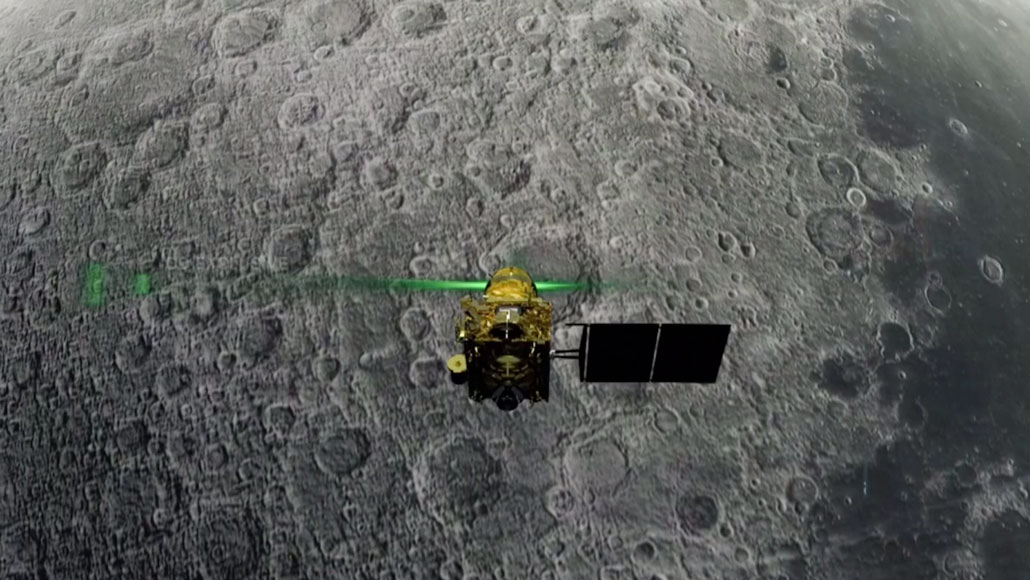India’s first attempt to land on the moon appears to have failed
The Vikram lander likely crashed onto the lunar surface on September 6

India's Chandrayaan 2 spacecraft (illustrated) searched for the Vikram lander from orbit. Chandrayaan 2 will continue observing the moon for about a year.
ISRO







